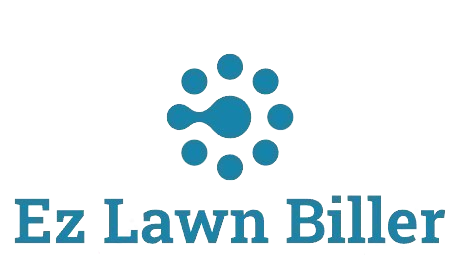Managing schedules can be a daunting task, but with the right tools, it can become effortless and efficient. Discover top tools to optimize your schedule management.
Top Tools to Help You Manage Schedules
In today’s fast-paced world, managing schedules effectively is more crucial than ever. Whether you’re a business professional juggling meetings, a student coordinating classes, or a homeowner planning family activities, the right scheduling tools can make a significant difference. This blog post will cover some of the top tools available for managing schedules, highlighting their features, benefits, and how they can simplify your life.
Managing schedules is not just about keeping track of appointments; it’s about ensuring that you have the time to focus on what matters most. With the increasing complexity of our daily lives, we often find ourselves overwhelmed by commitments and deadlines. Fortunately, technology has provided us with innovative tools to help us stay organized and on track. In this post, we will explore various scheduling tools, their functionalities, and how they can enhance your productivity.
Understanding the Importance of Schedule Management
Effective schedule management allows individuals and businesses to allocate their time wisely, ensuring that important tasks are completed without unnecessary stress. Studies show that poor time management can lead to increased stress and decreased productivity.
For example, a survey by the American Psychological Association found that nearly 60% of adults reported feeling overwhelmed by their schedules. This statistic highlights the need for tools that can simplify the process of managing time, whether it’s through reminders, shared calendars, or automated scheduling.
Moreover, an efficient schedule management tool can improve communication among team members, reduce scheduling conflicts, and enhance overall efficiency. In the next sections, we will delve into some of the most popular tools available today.
1. Google Calendar: The Essential Scheduling Tool
Google Calendar is one of the most widely used scheduling tools globally. Its user-friendly interface and integration with other Google apps make it a go-to choice for many individuals and organizations.
One of the standout features of Google Calendar is its ability to set reminders for meetings, appointments, and important tasks. Users can create and share calendars, making it easy for teams to coordinate schedules. Additionally, the calendar can sync with mobile devices, ensuring that you stay updated on-the-go.
For businesses, Google Calendar offers the ability to create multiple calendars for different projects or departments, which helps keep everything organized. The option to add color codes to events also provides a visual way to manage time effectively, allowing users to quickly assess their availability. For a more advanced solution, consider exploring tools like [Lawn Biller Software](https://ezlawnbiller.com/) for specific industry needs.
2. Microsoft Outlook: Comprehensive Schedule Management
Microsoft Outlook is not just an email client; it also offers robust scheduling features that many professionals rely on. With Outlook, users can manage their emails, calendars, and tasks all in one platform. This integration enhances productivity by allowing users to schedule meetings directly from their inbox.
Outlook’s calendar feature allows users to set recurring appointments, which is particularly helpful for regular meetings or deadlines. Users can also send meeting invites to participants, complete with agenda and attachments, ensuring everyone is on the same page.
Moreover, Outlook offers comprehensive sharing options. You can share your calendar with colleagues or view others’ calendars, making it easier to find suitable meeting times. For businesses looking for specialized billing solutions, supplementing your schedule management with tools like [Lawn Biller Software](https://ezlawnbiller.com/) can streamline operations.
3. Trello: Visual Scheduling for Teams
Trello is a popular project management tool that utilizes boards, lists, and cards to help teams visualize their schedules and tasks. This tool is particularly effective for collaborative projects, as it allows team members to track progress on tasks and deadlines.
Each card within Trello can represent a task or appointment, and you can set due dates, attach files, and leave comments. This interactive approach to scheduling encourages team collaboration and accountability, as everyone can see what tasks need to be completed and by when.
Furthermore, Trello integrates with various other tools, such as Google Calendar and Slack, allowing for seamless updates across platforms. Teams looking for a comprehensive project management solution combined with scheduling capabilities may find Trello to be an excellent choice, particularly when paired with billing software like [Lawn Biller Software](https://ezlawnbiller.com/).
4. Asana: Task and Schedule Integration
Asana is another powerful project management tool that allows users to manage tasks while also keeping track of their schedules. With Asana, teams can create projects, assign tasks, set deadlines, and track overall progress.
Asana’s calendar view provides a visual representation of all deadlines and milestones, helping users manage their time effectively. The platform also allows for task dependencies, meaning that one task can’t start until another is completed, adding another layer of organization to the scheduling process.
For teams that rely on collaboration, Asana facilitates communication by allowing team members to comment on tasks and share updates. This minimizes confusion and keeps everyone informed. For those in the lawn care industry, integrating Asana with [Lawn Biller Software](https://ezlawnbiller.com/) can enhance task management alongside client billing.
5. Calendly: Simplifying Meeting Scheduling
Calendly is a scheduling tool designed to eliminate the back-and-forth emails often associated with setting up meetings. This tool allows users to share their availability through a personalized link, enabling others to select a time that works for them.
With Calendly, users can set their availability preferences for different types of meetings, which automatically updates based on their calendar. This feature reduces scheduling conflicts and ensures that meetings happen at convenient times for all parties involved.
Additionally, Calendly integrates with other calendar tools like Google Calendar and Outlook, helping users keep all their appointments organized. This tool is particularly useful for businesses and freelancers who frequently meet with clients and need to streamline the scheduling process. For added efficiency, consider pairing Calendly with [Lawn Biller Software](https://ezlawnbiller.com/) for a seamless client management experience.
6. Todoist: Task Management Meets Scheduling
Todoist is an effective task management tool that also incorporates scheduling features. Users can create tasks with deadlines, set priorities, and organize them into projects. This level of organization is vital for those who juggle multiple responsibilities.
What sets Todoist apart is its natural language processing feature. Users can type in tasks in everyday language, such as “Meeting with client next Tuesday,” and Todoist will automatically schedule it for the appropriate date. This intuitive functionality makes it easier to keep track of commitments.
Todoist also offers collaboration features, allowing users to share projects and assign tasks to others. This is especially beneficial for teams that need to coordinate their schedules around shared objectives. Integrating Todoist with billing systems like [Lawn Biller Software](https://ezlawnbiller.com/) can further enhance productivity.
7. Time Management Best Practices
While utilizing scheduling tools is essential, implementing effective time management practices is equally important. One of the most critical practices is to prioritize tasks based on urgency and importance. The Eisenhower Matrix is a popular strategy that categorizes tasks into four quadrants, helping individuals focus on what truly matters.
Additionally, setting specific time blocks for various tasks can help minimize distractions and improve focus. This technique, often referred to as time blocking, encourages users to dedicate uninterrupted time to specific activities, whether they are work-related or personal.
Regularly reviewing your schedule and adjusting it based on evolving priorities is also crucial. This flexibility allows you to stay adaptable and ensures that you are always focusing your efforts where they are needed most. By combining these best practices with the right tools, you can maximize your efficiency and effectiveness.
Conclusion
In conclusion, effective schedule management is essential for maintaining productivity and reducing stress in our busy lives. With a variety of tools available, from Google Calendar to specialized software like [Lawn Biller Software](https://ezlawnbiller.com/), there is a solution for every individual and business need.
By understanding the features and benefits of these tools, you can choose the right one to enhance your scheduling efficiency. Remember that integrating these tools with effective time management practices will lead to improved outcomes and better work-life balance.
Take the first step today by exploring these tools and implementing them into your daily routine. Start managing your schedule more effectively, and enjoy the peace of mind that comes with being organized!




